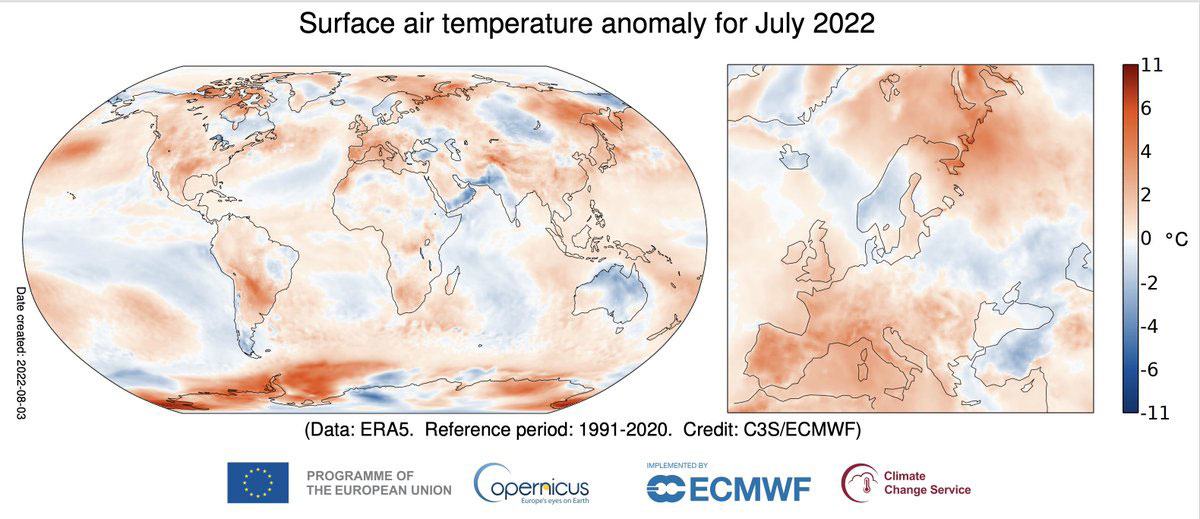Surface air temperature.According to the World Meteorological Organization (WMO), temperatures were close to 0.4℃ above the 1991-2020 average across much of Europe, with southwestern and western Europe being the most above-average regions, because of an intense heatwave around mid-July.
Glaciers have seen a “brutal, brutal summer,” Ms. Nullis continued.
Record temperatures
It also dominated a band of territory stretching from Iceland, across Scandinavia via the Baltic countries continuing as far as the Caspian Sea.
Moreover, temperatures were generally below average in Georgia and throughout much of Türkiye.
“This is despite the La Niña event that’s meant to have a cooling influence,” explained WMO spokesperson Clare Nullis.
“We started with low snowpack on glaciers in the alps, reported by meteorological services, and now successive heatwaves- this is bad news for glaciers in Europe. The picture for Greenland’s glaciers is more mixed, however, as there has not been relentless heat”.
National all-time records for daily maximum temperatures were also broken in Wales and Scotland.
Temperature anomalies
Using data from the European Commission’s Copernicus Climate Change Service, the UN weather agency confirmed that Europe had its sixth warmest July.
The heat travelled further north and east ushering very high temperatures across other countries, including Germany and parts of Scandinavia, with local July and all-time records broken at several locations in Sweden.
Arctic Sea ice was four per cent below average, ranking 12th lowest for July according to satellite records.
Polar ice shrinking
July also saw the lowest Antarctic Sea ice on record, a full seven per cent below average.
“We saw this in some places, but not globally,” she added, noting that it was “one of the three warmest [Julys] on record, slightly cooler than July 2019, warmer 2016- but the difference is too close to call”.
WMO cited the Copernicus Climate Change Service in saying that Arctic Sea ice concentration was the lowest for July on satellite record, which started in 1979, and sea ice there was the 12th lowest ever.
At the same time, from the Horn of Africa to southern India, and much of central Asia to most of Australia experienced below-average temperatures.
In the throes of the heat, WMO Secretary-General Petteri Taalas said in a press conference on 18 July, “this kind of heatwave is the new normal”.
WMO
 Portugal, western France and Ireland broke record highs, while England hit 40℃ readings for the very first time.Spain also had its hottest month on record in July, with an average national temperature of 25.6°C – with a heatwave from 8 to 26 July that was the most intense and longest lasting on record.
Portugal, western France and Ireland broke record highs, while England hit 40℃ readings for the very first time.Spain also had its hottest month on record in July, with an average national temperature of 25.6°C – with a heatwave from 8 to 26 July that was the most intense and longest lasting on record.